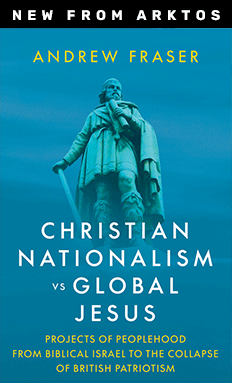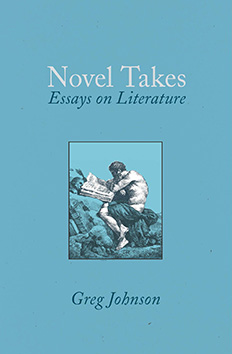Grooming Gangs Come from ‘Diverse Backgrounds’, Says Home Office
Lizzie Dearden, The Independent, December 16, 2020
Grooming gangs come from “diverse backgrounds”, a Home Office review has concluded.
The research, originally promised by Sajid Javid in 2018, was published on Tuesday following a government U-turn.
The Home Office previously said releasing the paper would not be in the “public interest”, in response to a Freedom of Information request by The Independent, but committed to making it public after a petition signed by more than 130,000 people.
The paper said that although a number of high-profile grooming cases, including Rotherham, Rochdale and Telford mainly involved men of Pakistani ethnicity, “links between ethnicity and this form of offending” could not be proven.
“Research has found that group-based child sexual exploitation (CSE) offenders are most commonly white,” it added.
“Some studies suggest an over-representation of black and Asian offenders relative to the demographics of national populations. However, it is not possible to conclude that this is representative of all group-based CSE offending.”
The document said there were issues with the data used in existing studies, sample selection and a “potential for bias and inaccuracies”.
“It is difficult to draw conclusions about the ethnicity of offenders as existing research is limited and data collection is poor,” the Home Office added.
Evidence from police forces said that gangs “come from diverse backgrounds”, but that most are ethnically homogenous.
Grooming gang members are predominantly male and under the age of 30, but can be much older, the research said.
“A sexual interest in children is not always the predominant motive,” it added.
“Financial gain and a desire for sexual gratification are common motives and misogyny and disregard for women and girls may further enable the abuse.
“The group dynamic can have a role in creating an environment in which offenders believe they can act with impunity, in exacerbating disregard for victims, and in drawing others into offending behaviour.”
Police who have investigated cases told the Home Office they believe abusers seek to distance themselves from victims by “othering” them, because they are from a different community or gender.
The report said that identified victims are mainly girls aged between 14 and 17, and may have vulnerabilities that create barriers to seeking help.
They include being in care, learning disabilities, drug and alcohol dependency, mental health issues and previous abuse.
The report said the prevalence of grooming gangs could not be determined because of under-reporting and recording practices, as offenders are charged with a wide range of different crimes.
In the year to March 2020, around 10,500 crimes were put under a new CSE “flag” created by police to improve data collection.
A snapshot of data taken in June 2020 showed there were more than 70 live grooming gang investigations across England, Wales and Scotland, although only 32 of 44 forces submitted information.
The nationalities and ethnicities of suspects in current investigations “varied considerably”, the report said, including British, American, Bangladeshi, Bulgarian, Dutch, Eritrean, Indian, Jamaican, Lithuanian, Pakistani, Portuguese and Somali.
“This analysis demonstrated that the existing data would not answer the question of the relationship between ethnicity and child sexual exploitation,” it added.
“Based on the existing evidence, and our understanding of the flaws in the existing data, it seems most likely that the ethnicity of group-based CSE offenders is in line with child sexual abuse more generally and with the general population, with the majority of offenders being white.”
The report said that efforts to combat grooming gangs should not be “limited to focusing on one particular community or culture”, although cultural characteristics and links between offenders can be relevant.
The research found no evidence of a “highly organised national network” conducting coordinated abuse in different areas, which has been suggested by far-right groups who blame Muslims or Pakistani-origin men for the abuse.
Grooming gangs’ structures and modus operandi vary, the report said, although frequent elements include contacting victims in the local area, grooming them into believing they are in a legitimate relationship, and the use of parties, drugs and alcohol to reduce victims’ resistance and willingness to report.
The paper warned that such abuse “can happen anywhere”, adding: “This kind of abuse can and will happen when groups of (largely) men have access to potential victims in circumstances where they feel able to act with impunity, and where the group dynamic means perpetrators both give each other ‘permission’ and spur one another on to greater depravity and harm.”
Home Office officials conducted a review of published evidence on grooming gangs, interviews with police officers, original research and used previous independent reports and investigations from Rotherham and other significant cases.
The work was informed by an external reference group including survivors and independent experts.
Sammy Woodhouse, a Rotherham survivor who helped expose the scandal and sat on the external reference group, said the abuse was still happening.
“As a country we still do not understand abuse and exploitation, and the government is not doing enough to prevent and tackle it, so I welcome the publication of this paper,” she added.
“I want perpetrators to be held to account for their criminal activity regardless of race or religion because unfortunately they haven’t, and it still remains a subject that we cannot openly discuss. No one should be exempt.”
Sarah Champion, the MP for Rotherham who also sat on the external reference group, said the report “raises more questions than it answers”.
“The government needs to promote a shift in focus to prevention and early intervention,” she added. “They need to closely monitor the effectiveness of local safeguarding partnerships, rather than seemingly taking this horrendous crime as inevitable.
“Going forwards, I want to see a nationally recognised and approved set of triggers that, once met, require local authorities to provide support for children showing signs of harm, rather than the current postcode lottery when it comes to help.”
The home secretary, Priti Patel, said: “Victims and survivors of group-based child sexual exploitation have told me how they were let down by the state in the name of political correctness. What happened to these children remains one of the biggest stains on our country’s conscience.
“This paper demonstrates how difficult it has been to draw conclusions about the characteristics of offenders.”
Ms Patel said a forthcoming Tackling Child Sexual Abuse Strategy would improve the understanding of child sexual abuse, including around ethnicity, to enable authorities to safeguard children, deliver justice for survivors and “restore the public’s confidence in the criminal justice system’s ability to confront this issue”.















